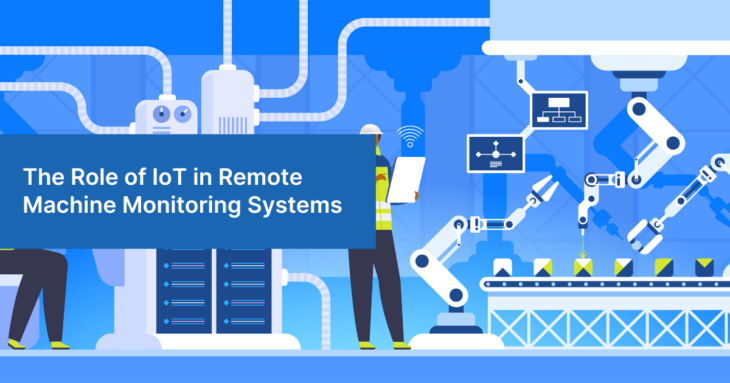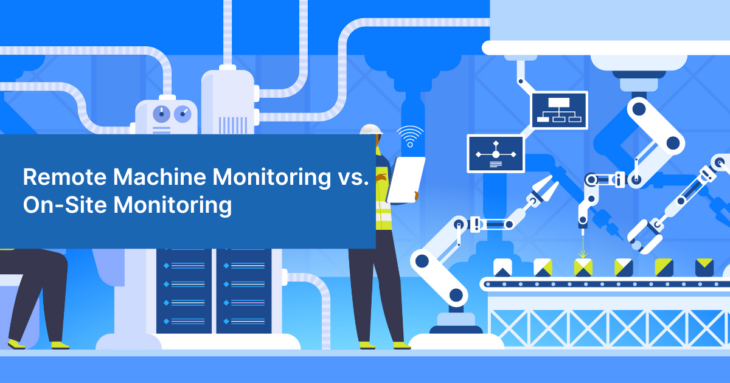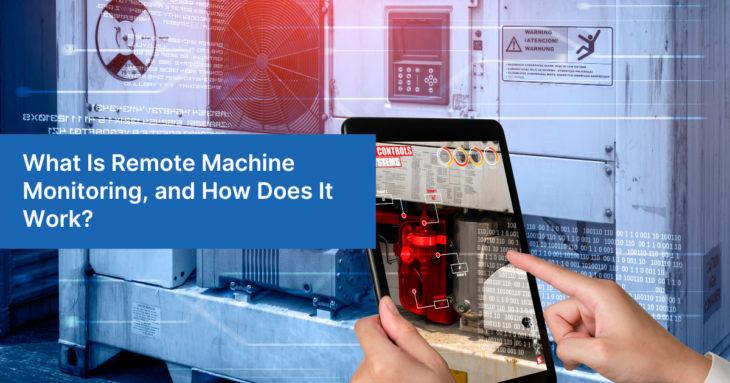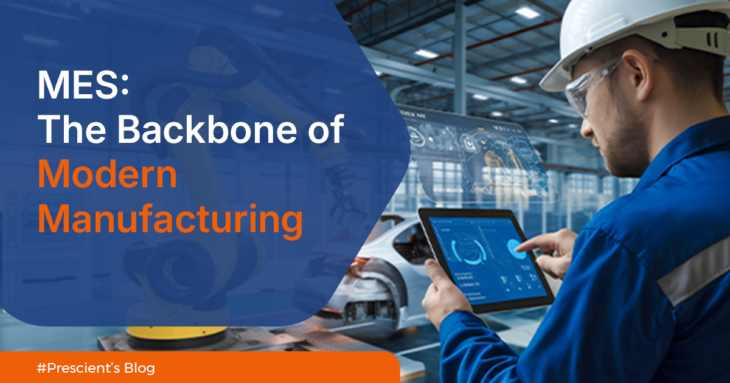Predictive vs. Preventive Maintenance: Which Strategy is Better for Manufacturers
Downtime in manufacturing is quite expensive nowadays. To prevent downtime, or more precisely, minimise unexpected breakdowns and equipment’s useful life, manufacturers take strategic approaches to maintenance. Two very common techniques are prediction and prevention. Effective maintenance can make a difference in winning in manufacturing. Equipment failure interrupts production, wastes resources, and could compromise safety. Maintaining equipment proactively minimises unplanned downtime and ensures manufacturers’ production efficiency and bottom line. Preventive and predictive maintenance also allow manufacturers to align their resources efficiently, reduce costs, and extend equipment lifespan. The advantages created create a foundation for enhanced productivity and profitability, thus making maintenance an investment in the company’s future. Predictive Maintenance Predictive maintenance is a strategy that uses real-time data to predict equipment failures before they happen. Unlike a fixed schedule, PdM relies on condition-monitoring technologies and data analytics. It determines when equipment most likely needs maintenance. It can predict problems with high accuracy, thus avoiding unnecessary interventions. Technologies in Predictive Maintenance Some of the advanced technologies required for predictive maintenance are: Sensors: These collect data on equipment health indicators like temperature, vibration, and pressure, offering insights into real-time performance. Data Analytics and Machine Learning: Analytical tools process sensor data to identify trends and anomalies, enabling accurate predictions about when a component may fail. Internet of Things (IoT): IoT devices interconnect machines and remote machine monitoring systems, allowing better monitoring and analysing equipment status across the facility. Cloud Computing: Cloud platforms store and process big data, making it available for access across locations and systems. Benefits of Predictive Maintenance The benefits of predictive maintenance are the following: Reduced Downtime: PdM allows teams to identify those potential issues before they become costly downtime. Improved Efficiency: PdM ensures that time and resources are used efficiently since maintenance occurs when necessary. Increased Equipment Life: Catching problems early could prevent additional wear on the equipment, extending its life. Cost Savings: Reduced breakdowns and efficient resource usage will save money. Preventive Maintenance Preventive maintenance is performed at regular intervals regardless of the machine’s condition. This approach uses historical data, manufacturer recommendations, and standardised schedules to guide maintenance activities. According to the schedule, it minimises the risk of equipment failure, provides constant performance, and prolongs equipment life. Scheduling and planning in preventive maintenance Proper planning and scheduling are essential for effective preventive maintenance. Maintenance teams use maintenance management systems to log equipment history, track intervals, and plan upcoming service dates. Scheduling tasks based on manufacturer recommendations and the company’s operational requirements ensures that equipment is run over long periods without disrupting production schedules. Proper planning prevents resource overload by spacing out maintenance according to operational requirements. Benefits of Preventive Maintenance Preventive maintenance is similarly special, with its benefits, which include: Less Downtime Unplanned: PM reduces the chances of unplanned breakdowns through regular equipment servicing. Extended equipment life is achieved by keeping equipment in the best operating condition and servicing regularly. Predictable costs: This approach allows cost predictability while budgeting. The scheduled costs are planned; hence, maintenance costs will readily be covered. Comparing Predictive and Preventive Maintenance Both predictive and preventive maintenance offer benefits through different approaches, costs, and applications. Advantages and Disadvantages Predictive Maintenance Advantages: It cuts down on unnecessary maintenance and reduces costs due to downtime, thus increasing efficiency. Disadvantages: Sensor installation and analytics infrastructure require a high upfront cost and skilled personnel for data interpretation. Preventive Maintenance Advantages: The schedule and costs are predetermined, easy to implement, and prolong equipment life. Disadvantages: It may lead to excessive maintenance and shutdown periods as equipment condition is not considered. Cost Comparison Predictive maintenance tends to have a higher upfront cost due to sensor and technology investments. However, the savings in downtime and repair costs can make up for this in the long run. Preventive maintenance has a lower upfront cost, but regular, scheduled services require more frequent resource use. Hence, it can be more expensive over time if unnecessary interventions occur. Factors to Consider When Choosing Between Strategies When selecting a maintenance approach, manufacturers should consider factors like: Equipment Criticality: Predictive maintenance better serves highly critical equipment since it emphasises minimising downtime. Maintenance History: Equipment with many failure incidents may require predictive approaches to correctly identify the root cause of failure. Hybrid Approach A hybrid maintenance strategy combines predictive and preventive techniques. It maximises equipment performance and minimises downtime. Manufacturers can perform preventive maintenance on less critical equipment using a hybrid approach while applying predictive maintenance to high-value assets. Remote machine monitoring systems prove useful in both cases. Advantages of a Hybrid Approach The hybrid approach provides more flexibility, avoids unexpected breakdowns, and keeps maintenance costs manageable. Manufacturers can combine both methods to ensure all the equipment is well maintained according to its needs and criticality, optimising performance and cost. Examples of Successful Hybrid Maintenance Strategies For example, plants in the automotive manufacturing industry might use predictive maintenance on the high-wear robotic arms but apply preventive maintenance to conveyor systems. In food processing facilities, the high-cost precision machinery, such as compressors, would receive predictive maintenance, while the less intricate machinery would be scheduled for preventive maintenance. Choosing the correct maintenance strategy is critical to a manufacturer’s efficiency and profitability. Both predictive and preventive maintenance present their benefits and may be suited to specific needs in equipment and operations. The best solution is a hybrid approach that combines predictive accuracy with preventive reliability. An effective maintenance strategy uses remote machine monitoring systems and helps minimise downtime, optimise costs, and keep production running in full swing, giving manufacturers an edge in the competition in their industry.
Read MoreTop 5 Benefits of Data Visibility for Optimizing Manufacturing Operations
The manufacturing industry surpasses all other sectors in cloud adoption, with 32% of manufacturers claiming the “cloud leader” designation. The industrial business is transitioning to digital processes as a necessity, not a choice. Cloud computing increases profitability by 22% and typically reduces costs by 23% through enhanced manufacturing processes and planning procedures. Only those who can utilise the cloud will swiftly overtake competitors with reduced production costs and margins. Manufacturing is transformed with data visibility, which means seeing, analysing, and understanding critical information in real-time. When every step of production creates data, clarity gives the manufacturer control over the process and outcome in a way that no one else can. Manufacturers can avoid inefficiencies, quality-control issues, and missed opportunities for savings. These are some productivity barriers that would limit one’s response time to the market demand. Data visibility in MES software solutions is essential for a business’s successful operation and long-term profitability, which survives on precision and speed in an industry. Benefit 1: Improved Decision Making Over 36% of industrial decision-makers find a need for more data and insights to be the most frustrating factor. In manufacturing, data visibility provides real-time insights that underpin well-informed decision-making. Monitoring production metrics in real-time allows manufacturers to make swift adjustments, ensuring that operations align with strategic objectives. Companies can proactively address potential system issues before they escalate by analysing trends and anomalies. For example, identifying seasonal production fluctuations allows manufacturers to adjust schedules. This feature optimises capacity and labour costs. Manufacturing execution system vendors ensure that data availability transforms raw information into actionable intelligence crucial for staying competitive in a constantly changing market. Benefit 2: Enhanced Efficiency and Productivity 61% of firms report challenges with data management, including acquiring new clients, optimising operations, and boosting productivity, which has impeded or will slow down automation efforts. Manufacturers can significantly enhance their productivity levels by leveraging data visibility. Real-time data can identify bottlenecks so that teams will address those issues before they impact the production schedule. For example, a manufacturer can identify a slow-moving assembly line, trace the cause of the delay, and allocate resources to rectify it. Data visibility lets teams see when equipment needs maintenance, reducing unexpected breakdowns and downtime. Through these measures, manufacturers optimise the production flow, directly relating to increased productivity and overall operational efficiency through MES software solutions. Benefit 3: Better Quality Control Quality control relies significantly on data visibility, whereby product quality is monitored from beginning to end in manufacturing. Real-time data allows the quality deviation at each stage to be noticed before flawed products reach the market. Data from the results of quality tests and the production processes can identify areas that commonly go wrong, and those processes can then be optimised to prevent their occurrence. Big data, driven by increasing interest in IoT and predictive maintenance, will become a significant trend. Manufacturers may expect every surface to become a sensor for real-time insights. Such advanced quality control minimises defects. It also helps avoid recalls, preserves the brand image, and finally ensures customer satisfaction—all factors associated with a successful commercial enterprise. Benefit 4: Increased Cost Savings Cost savings are the most concrete advantage of data visibility in manufacturing. By having all the operational data, manufacturers can determine areas of cost reduction. For instance, resource allocation data might identify the overuse of certain materials, and more strategic purchasing and usage can be made. In addition, inventory levels can be seen to prevent overstocking and understocking, optimising inventory management. By fine-tuning these aspects, companies eliminate unnecessary waste and spend less. The overall effects of such data-driven decisions manifest in considerable cost savings, thus directly contributing to profitability. Understanding what data is available, who owns it, and how to use it has enormous potential in three main areas: increasing the use of technology, cutting costs, and increasing operational effectiveness. With a 10% improvement in data usability, the typical Fortune 1000 company’s revenue could rise by approximately $2 billion, or $55,900 in sales per employee. Benefit 5: Enhanced Customer Satisfaction Data visibility improves customer satisfaction, product quality, lead times, and delivery schedules. Real-time data helps refine production schedules to avoid delays and guarantee timely delivery. Data related to consumer preferences may also be forwarded to deliver custom-made products and services that meet the consumer’s changing expectations. For example, stockouts can be prevented altogether, and manufacturers can process orders quickly when this data is used to configure production according to customer demand. Increased retention and loyalty from the marketplace lead to sources of competitive advantage in this buyer-centric market. Demonstrating the usefulness of data when properly understood and handled is essential to altering an organisation’s DNA. Business units committed to using data, having the proper focus, and undergoing a culture change may easily set themselves apart from rivals. Conclusion Data visibility helps benefit manufacturers in ways related directly to improved decision-making and increased consumer happiness. Since manufacturing is data-oriented, companies that invest in data visibility stand well toward significant operational competitive gains. Manufacturing execution system vendors optimise on improving efficiency and quality because once data is transformed into knowledge, it forms the nucleus for sustainable growth or endurance in the industry’s changing landscape.
Read MoreTop Trends in Manufacturing Execution Systems and Smart Energy Management
Manufacturing execution systems have revolutionised factory management. The technology is an innovation on its own. However, with further advancements in this technology, efficiency and productivity have increased. Manufacturing execution system vendors are integrating their systems with new technologies for faster turnarounds. Companies that have adopted these systems say they provide better management and assistance than ever before. The same goes for smart energy management systems. The trends showcase that companies rely on this technology to meet their sustainability goals and optimise their energy consumption. Let’s look at these trends to understand how these new technologies work. Manufacturing Execution Systems (MES) Trends Digital Twin Integration A digital twin is a virtual visualisation of a real product or process that may be utilised with an MES. It is a virtual depiction of an actual product or process, enabling real-time visibility and control over manufacturing operations. MES may gather and analyse data, monitor production activities, and deliver performance, status, and quality reports. Artificial Intelligence and Machine Learning Integrating generative AI into MES will increase predictive maintenance, resource allocation, and product quality. However, it primarily aids shop floor operators and managers in making choices and managing production processes using data expertise. For example, in the fashion industry, accuracy and compliance are critical. AI will assist operators in running safer, more dependable manufacturing processes, lowering production irregularities and eliminating risks. This will be especially beneficial in overcoming the workforce’s lack of expertise when older, more experienced workers retire in growing numbers. Internet of Things IoT and edge computing provide real-time monitoring and control of manufacturing operations. In the FMCG business, this can result in better inventory management, faster market reaction times, and greater product monitoring across the supply chain. All of these factors contribute to high levels of quality control and customer satisfaction. For instance, Prescient’s factoryCONNECT uses IoT to monitor and optimise supply chains. Companies testify that its sensors have significantly reduced the downtime of the production line and increased its output. Cloud-Based MES Cloud-based MES helps enterprises streamline production to meet market demand and offer new goods more quickly. It is more cost-effective and feasible for manufacturers since it eliminates the need for physical equipment and additional IT personnel. Cloud-based MES enables firms to connect departments and include customers and subcontractors in the supply chain. It also assists manufacturers in enabling AI, Digital Twins, and Machine Learning to enhance visibility, analysis, and collaboration. Cybersecurity Manufacturing execution system vendors are performing the following operations to secure your data: Use a powerful encryption method, such as AES (Advanced Encryption Standard), to safeguard data in transit and at rest. Use tight access restrictions and multifactor authentication to prevent unwanted access. Ensure that MES software is regularly updated and patched. Monitor network traffic with firewalls and intrusion detection systems to identify possible dangers. Smart Energy Management (SEM) Trends Energy Efficiency Smart energy management systems have in-built audit tools that provide automated reports. These reports help in aligning business processes with smart energy goals. The technology aims to democratise energy efficiency and transparency across the organisation, making it crucial for optimisation. Renewable Energy Integration Renewable energy integration refers to linking renewable energy sources to the electrical grid. It entails generating, transmitting, and distributing renewable energy into the conventional power grid. Solar, wind, and storage systems can be installed in distant places or isolated from the main grid during outages. New standards and guidelines are created to link more dispersed energy systems. Machine learning algorithms examine big datasets to anticipate renewable energy power outputs. These methods will help promote renewable energy use. Demand-side management (DSM) Demand Side Management refers to a range of tactics used by SEM providers to reduce energy consumption. SEM provides time-of-use or peak-load pricing to encourage companies to save energy during peak hours. It allows companies to get monetary incentives as they can now purchase energy-efficient equipment or lower their energy use during peak hours. With this system, companies can install energy-saving devices such as LED lights, smart thermostats, and high-efficiency chargers for better energy efficiency. Smart Grid Integration Smart grids track power flow from generation to consumption in real time. They can even monitor power usage at the appliance level. They optimise energy efficiency in the following ways: Manage electricity flow and reduce the load in real-time to match generation levels. Offer two-way communication between customers and utilities. Renewable energy sources like solar and wind power should be included in the system. Collect information about energy use and consumer preferences. Utilise cybersecurity methods like encryption and threat detection to defend themselves from cyber threats. Energy Analytics Energy analytics give a picture of previously unattainable insights into a company’s energy statistics. Energy analytics software shows when the highest energy spend occurs. It also identifies which aspects of the company are inefficient and how external variables affect energy use. For example, Prescient’s PowerConnect has energy data analytics that reveal if one of your buildings consumes a surprising amount of energy during non-operational hours. Further examination may reveal that the heating controls in this building are malfunctioning. Taking action and resolving this issue will save thousands over a year. MES and SEM technologies are rapidly evolving. Manufacturers can optimise their operations and improve sustainability by adopting these systems. They can gain all the benefits of the new advancements with a fully-fledged smart energy management and manufacturing execution system integration.
Read MoreBoosting Profitability with Predictive Maintenance via Remote Monitoring
Maintaining profitability and boosting margins is always a top priority for many organisations. However, the process of doing so is quite meticulous for heavy-duty industries. Equipment is more prone to damage due to regular operations. Moreover, maintenance teams must constantly be alert to take swift corrective actions. These teams should be well-qualified and knowledgeable to diagnose the exact problem and apply the solution. The best way to move forward is to use new technologies. Predictive maintenance software is necessary for modern industrial operations due to their large scale and multiple geographical locations. It is a comprehensive software solution that includes various technologies working cooperatively. An Overview of Predictive Maintenance Predictive maintenance software combines different technologies. It is a synergy of data analysis, IoT sensors, and cloud computing. Here are the applications of each of these technologies: Data Analysis: It processes and examines data to find useful information and support decision-making. The main purpose of data analysis in a predictive maintenance software is to find anomalies that may indicate system failures. IoT Sensors: Sensors are devices that measure the output and operations of a system. It directly sends the data to the dashboard for data analysis. Cloud Computing: It transports data from one source to another via the internet. Cloud computing is faster than other forms of data transmission. As opposed to reactive maintenance, predictive maintenance aims to solve issues before they occur. The data gathered from the sensors makes such resolution procedures possible. The system swiftly picks up any anomalous behaviour to alert the respective authorities. On the other hand, this technology also differs from preventive maintenance. Although the name sounds the same, preventive maintenance has a slightly different protocol. It refers to regular scheduling of equipment maintenance and other systems to prevent failures. When employed with the other strategies, preventive maintenance makes up the total productive maintenance procedure. How Remote Monitoring Works The major purpose of predictive maintenance is to monitor plants and machines worldwide remotely. Therefore, this technology is also called a remote machine monitoring system. It provides the following advantages to industrial plants that adopt it: Real-time monitoring of the system. Real-time data analysis through sensors. Early detection of issues to lower the mean time between repairs. Reduced downtime to lower the mean time between failures. Predictive maintenance has the potential to reduce facility downtime by 5–15% and boost worker productivity by 5–20%, according to a 2022 Deloitte research. Critical Applications of Predictive Maintenance via Remote Monitoring Manufacturing Sensors monitor industrial processes and communicate updates to the appropriate parties. This enables proactive and timely decisions. Remote monitoring tracks, analyses, and controls vital assets, therefore preventing unplanned downtime and equipment failures. The technology collects data from vibrational and temperature analysis to detect failures. Visualisation tools also display complicated data in an easily comprehensible way through dashboards. Energy Generation Predictive maintenance improves operational sustainability by reducing energy wastage. It optimises asset performance and uptime to save money through oil analysis. Early detection of probable defects leads to fewer failures and less scheduled maintenance. It also reduces frequent unexpected downtimes. Hence, remote machine monitoring system software improves the efficiency of the energy generation process. Transportation Suppliers and logistics businesses can discover failure patterns and abnormalities. The system learns from them and forecasts future failures of machine components. Hence, it allows them to be replaced before they fail. This increases the supply chain’s efficiency and maximises equipment availability. The fleet can be optimised entirely to prevent mishaps on the road. It is also essential for fuel conservation and preventing pilfering. Building Management Predictive maintenance software monitors the location and handling of high-value equipment in real-time. The sensors monitor assets like: HVAC Valves Motors Pumps Conveyors Lifts Proactively monitoring performance reduces downtime and lost productivity. It also analyses condition monitoring data to find patterns and opportunities for improvement. Real-time monitoring of environmental variables and equipment performance allows for detecting possible dangers. Challenges and Considerations The various challenges associated with the adoption of a new predictive maintenance system are as follows: System infrastructure: Due to the strategy’s complexity, there are significant initial costs. These frequently entail spending on maintenance and data management tools. These costs also include updating and merging antiquated technology and monitoring systems. Capital is invested in the infrastructure supporting the data and systems. Employee training: It may be costly and time-consuming to teach staff members how to utilise new equipment, procedures, and data interpretation techniques. Requirements for data: Previous performance data can be used to forecast future results. The availability of historical and proxy data is essential for the success of predictive maintenance. Analysing data correlations with comparable equipment types under real-world operating situations is also crucial as it can enhance the prediction power of analytics. Best Practices for Implementing Predictive Maintenance Some of the best practices for implementing remote machine monitoring systems are: Feed historical data into the system for accurate predictions. Train the system properly to avoid unnecessary alerts and notifications. Train your employees to adopt the new system and its procedures. Integrate the system with your existing systems and processes for smooth workflows. Predictive maintenance via remote monitoring offers significant benefits for industries seeking to improve profitability. Industries with multiple locations can proactively identify and address potential equipment failures. While there are challenges, the long-term benefits of predictive maintenance often outweigh the initial costs. You can employ the solution with top-notch software like machineCONNECT, which was designed by Prescient Technologies. It is a predictive maintenance software that optimises your maintenance procedures and reduces downtime. It is the first step towards making your business more efficient!
Read MoreThe Role of IoT in Remote Machine Monitoring Systems
Remote monitoring has transformed the manufacturing industry, bringing new levels of process control. This transformation has been driven mainly by what came to be known as the Internet of Things (IoT). IoT enables manufacturers to get real-time information that can help them adjust operations to overcome potential issues and problems. All of this is done remotely with the decision-maker absent from the scene of operation of the manufacturing process. In this article, we’ll examine how IoT remote machine monitoring is used in the manufacturing industry. Core Components of IoT in Manufacturing How IoT is Used In Manufacturing When it comes down to the applications of IoT to the shop floor, there are numerous ways in which it is useful. In this section, we take a look at how it’s used in manufacturing: 1. Predictive Maintenance Predictive maintenance is all about staying ahead of problems. Manufacturers can spot issues by closely monitoring equipment in real time before they become expensive failures. A simple example is catching an unusual vibration or a temperature spike in the chuck of a lathe machine. These are often signs that something has come loose or might be starting to fail. This information lets you fix the problem early and avoid unexpected downtime. 2. Quality Control Quality is another area where IoT sensors play a crucial role in maintaining consistency during manufacturing. Quality control systems might use radiation, sound, and vision-based inspection systems to measure material properties, dimensions, surface defects, or temperature. The data helps to strictly adhere to quality standards set by the manufacturer. If a sensor detects any deviations from the norm, real-time data alerts operators to potential defects. 3. Asset Tracking and Management IoT simplifies asset tracking and management by providing real-time updates on tools, materials, and finished products. With RFID tags, manufacturers can closely monitor every asset throughout the production process and on the factory floor. Machine vision systems can also extend this capability from the factory floor to the whole supply chain. Manufacturers can optimize stock levels and reduce waste by integrating IoT into inventory management. Automated tracking further helps prevent overstocking and stockout problems. 4. Energy management IoT plays an important role in monitoring energy consumption across manufacturing plants. By continuously monitoring energy use through smart meters and sensors, manufacturers can gain detailed insights into where and how energy is being consumed. The sensors can be used to monitor individual machine energy consumption and energy spent on human activities as well. When coupled with a feedback system, it can also optimize on and off times to save energy to the full extent. IoT for Data-Driven Decision Making IoT data is the most valuable output which can be used in real time or for long-term analytics. Here’s how it works: 1. Real-Time Analytics IoT data enables real-time analytics, which gives instant insights that help manufacturers make quick decisions. Continuous data collection from sensors allows you to spot issues and adjust operations immediately. This means you can tackle problems before they escalate and keep everything running smoothly. 2. Visualization and Dashboard Visualization tools and dashboards make IoT data easy to understand for anyone. The interfaces, often customized to the manufacturer by the IoT platform, turn raw data into clear, actionable visuals, graphs, charts, and maps. The shows what’s happening across the plant in real time. For plant managers, dashboards are crucial as they provide a quick view of the operations, highlight key metrics, and alert them to any issues. 3. Machine learning and AI Integration Beyond real-time analytics, platforms also offer machine learning capabilities that turn long-term data into useful information to predict trends, spot patterns, predict failures, and optimize operations. Using Ai gives manufacturers critical insight they never had earlier. Closing Thoughts IoT remote machine monitoring is already unlocking value to manufacturers at an unprecedented level. In fact, McKinsey estimates the global value of IoT to be $12.5 trillion by 2030. This means going forward more manufacturers will adopt the technology to gain a competitive edge in the market. If you are in the manufacturing sector you must know how you can improve your operations using IoT. MachineCONNECT is an advanced machine monitoring system designed for manufacturers to act as a command center for process control. Contact our team today to learn how your factory can benefit from IoT and significantly improve its operations. Click here to request a demo!
Read MoreRemote Machine Monitoring vs. On-Site Monitoring
Monitoring machinery in manufacturing is like having a pulse on the equipment. It tells you when the machines are running smoothly and helps catch issues before they spiral out of control. Traditionally, monitoring was done on-site with technicians physically present to check every detail. But as technology advances remote machine monitoring is becoming the next logical step as it offers real-time data and control from anywhere. In this article, we’ll take a closer look at remote machine monitoring vs. on-site monitoring and explore their benefits, challenges, and differences. On-Site Monitoring On-site monitoring is the traditional way of keeping an eye on machines in a manufacturing facility. It involves technicians and engineers being physically present to oversee operations. This manual approach allows them to monitor performance metrics, inspect components, and respond immediately to any issues. The technicians are always on-site watching machine parameters such as temperature, power consumption, spindle speed, tool wear, and other essential items specific to their process. One of the main advantages of on-site monitoring is the ability to access machine data instantly. Technicians on the ground can quickly spot and address abnormalities and minimize downtime. Because this method doesn’t rely on internet connectivity, it’s particularly useful in locations where network stability might be an issue. On-site monitoring requires a significant investment in human power and also needs skilled workers who are adept at monitoring machines and processes. Even in plants that employ some level of digitization to observe the process, on-site personnel are needed to monitor things. For companies with multiple manufacturing sites, scaling up on-site monitoring can also become costly. Remote Machine Monitoring Remote machine monitoring is made possible by using the Industrial Internet of Things (IIoT) and cloud-based platforms. With remote monitoring, manufacturers can collect real-time data from machines across multiple locations, analyze performance, and address issues without needing technicians on-site. One of the main benefits of remote monitoring is its scalability. Companies with multiple manufacturing sites can monitor all operations from a centralized dashboard and reduce the need for on-site staff. The data collected can be analyzed to identify patterns, predict maintenance needs, and prevent potential failures. In the long run, remote machine monitoring is useful for condition monitoring of machinery and equipment. Detailed performance data can be streamed and stored over time with sensors and IoT devices installed on machines. This data can be used to assess performance and predict loss in efficiency or equipment failure well in advance. While there are downsides to remote machine monitoring in the form of network and cybersecurity challenges, it is better in every parameter compared to on-site monitoring. Remote Machine Monitoring Vs. On-site Monitoring (H2) Now let’s look at some of the key remote machine monitoring vs. on-site monitoring differences: Difference Parameter Remote Machine Monitoring On-Site Monitoring Cost Savings Remote monitoring offers greater cost efficiency compared to on-site monitoring. On-site monitoring requires continuous investment in personnel, training equipment, and operations. It can add up in terms of cost especially in large or multi-site operations. Scalability Scalability with remote monitoring is a major benefit as it allows manufacturers to oversee multiple sites from a centralized location. The need for physical presence and skilled technicians limits on-site monitoring. Since an extensive training period is involved, scaling is slower compared to remote monitoring. Data Collection and Analytics Remote monitoring systems are designed to collect vast amounts of data in real-time. The data is instantly updated to secure servers and is available for analytics almost instantaneously. On-site monitoring can gather high-quality data. However, uploading manual data to the MES or ERP systems takes time, which makes instantaneous analytics impossible. Maintenance and Downtime Management By using predictive analytics, remote systems can identify potential issues before they lead to machine failure. Maintenance than then be scheduled appropriately. On-site monitoring is often reactive and addresses issues only after they’ve occurred. Security and Compliance Remote monitoring systems rely on internet networks making them vulnerable to cybersecurity threats. However, remote service providers have robust security features for data transfer and storage. On-site monitoring faces physical security risks, data breaches from human error, and sabotage. Compliance with industry standards also has to be part of mandatory training for the personnel. Decision Making Remote monitoring makes instantaneous, data-driven decisions a common thing with manufacturers. Collecting real-time data from machines provides a complete overview of operations that can be analyzed to identify trends and optimize performance. On-site monitoring also supports data-driven decision-making. However, there is a significant lag from when the data is collected to when it is uploaded to the system for analytics. The lack of real-time insight makes it hard to detect immediate trends and early warning signs. Competitive Advantage for Manufacturers With the world already in Industry 4.0, manufacturers adopting remote monitoring have a competitive edge over others. Moreover, they are able to offer better maintenance to clients backed by robust data. Although on-site monitoring is effective in smaller localized operations, it may not offer the same level of flexibility and scalability. Manufacturers relying solely on on-site monitoring might find it more challenging to compete globally. To Wrap It Up While both remote and on-site machine monitoring play their roles in manufacturing, the future is remote. We have seen the differences in remote machine monitoring vs. on-site monitoring in terms of cost, security and data-backed decision-making, and there’s a clear winner. Manufacturers need to incorporate remote machine monitoring to stay competitive in an ever-growing digital production ecosystem. If you wish to learn more about how you can upgrade to remote machine monitoring, get in touch with our team and request a demo!
Read MoreWhat Is Remote Machine Monitoring, and How Does It Work?
Remote machine monitoring, in simple terms, is about keeping an eye on your equipment digitally at all times. It’s a ground-breaking advancement in the manufacturing sector, enabling manufacturers to stay proactive regarding their equipment. Traditionally, it was a manual process to monitor equipment and keep it on track or predict output and failures. Now, manufacturers can track machine performance, prevent breakdowns, and streamline maintenance by using sensors and real-time data. Remote machine monitoring now gives manufacturers an edge for staying competitive in today’s fast-paced market, where downtime can be costly. Understanding Remote Machine Monitoring? So, what is remote machine monitoring precisely? Before the advent of digital technology, monitoring equipment on the production line required manual checks and on-site inspections. However, manufacturers are shifting to remote capabilities with advancements in digital sensing and data analytics. The migration to remote monitoring has been made possible by the Internet of Things (IoT). IoT connects machines to the internet, allowing them to transfer data seamlessly and in real-time. Sensors play a crucial role in capturing data from factory floor machines, such as tool/work temperature, vibration, pressure, output dimensions, orientations, etc. This data is then transmitted to the manufacturers’ cloud computing services, where it’s stored and processed. Data analytics, including AI and machine learning, come into play by making sense of this data. They help in predicting failures, scheduling maintenance, and optimizing machine performance. In all, remote monitoring significantly improves the manufacturing process. Consider a manufacturer of fine machine components who uses CNC machines to produce precision aerospace components. Sensors monitor the CNC machine’s spindle speeds and coolant levels, temperature, and vibration levels. If the system detects an abnormal spike in spindle vibration, it could indicate potential tool wear, damage to the tool, or even the tool coming off the chuck. An alert is immediately sent to the maintenance team who inspect and replace the worn tool if needed before it produces defective components. The quick action prevents damage and potential downtime. In the long run the data gathered can also be used for predictive maintenance and anticipate tool wear. How Remote Machine Monitoring Works Now that you have an understanding of what is remote machine monitoring, we’ll take a closer look into the finer details of how it works: For more information 1. Data Collection Remote machine monitoring begins with data collection where sensors are placed on crucial areas of the machines to capture vital information. These sensors track various parameters such as temperature, pressure, vibration, forces, acceleration, fluid flow, weight, position, proximity, and many other information specific to the manufacturer. They provide a comprehensive overview of the machine or the production line’s operational condition. 2. Data Transmission The collected data needs to be transmitted to a central system for analysis. This is achieved through wireless communication protocols like Wi-Fi, Bluetooth, and cellular networks. Gateways for data are also used as intermediaries so that data is transferred from the sensors to the cloud securely. Data can also be stored locally to reduce the load on cloud systems and enable faster response times. 3. Data Processing and Analysis Once the data reaches the cloud, it can be processed and used for analysis. Cloud-based solutions store the data and use advanced algorithms, AI, and machine learning to analyze it as per the needs of the client. The insights gained from data help identify patterns, predict potential failures, and optimize machine performance. 4. Real-Time Monitoring and Alerts The processed data is then visualized on dashboards and interfaces provided to people on the floor or in decision-making positions. In live production, the operators also get real-time insights into machine performance and what can be expected. Dashboards offered by these service providers are user-friendly and accessible from various devices, making it easy to monitor equipment from anywhere. Operators can also set up alerts and notifications when specific conditions are sensed to inform them of any critical issues promptly. 5. Integration with Existing Systems Remote machine monitoring systems are also often built to integrate with existing enterprise resource planning (ERP) platforms. This integration is set up for instantaneous data flow and coordination activities across the organization. The data is necessary for maintenance schedules, inventory management, and other critical processes. Case Study: Real-Time Complete Visibility of Asset Operations and Performance with Machine with MachineConnect In the manufacturing and industrial automation sector a key challenge faced by medium to large-scale machine builders is the lack of operational data from machines. With this client, even when the data was available, it wasn’t utilized effectively. The result was an inability to analyze machine uptime, quality of output, and performance. The gap in insight prevented the machine builder from fine-tuning asset parameters, which got in the way of optimal performance and output. MachineConnect provided a robust solution by offering complete information on asset operations through Overall Equipment Effectiveness (OEE) parameters. Its graphical representations enhanced data visualization, which helped stakeholders to interpret and act on the information. It also enabled real-time data availability from geographically distributed machines into a single command center. With MachineConnect in place, the client saw some impactful benefits. Accurate reporting meant they could better use their data from the shop floor. Having real-time information allowed them to respond to any issues that came up quickly. The detailed data analysis gave them clear insights, which helped them fine-tune their machines for reliable performance. Ultimately, the machine builder could optimize their operations, making smart decisions and getting more value from their machines. It was a game-changer for keeping everything running smoothly and efficiently. To Wrap It Up Using remote monitoring systems can give a significant edge to manufacturers. They provide real-time data and accurate reports to address any issues quickly. Analyzing detailed operational data can boost efficiency and reliability. These systems help you stay ahead of the curve through operational efficiency and market readiness. Discover how MachineConnect can transform your manufacturing process by providing unparalleled visibility. Contact us today to learn more and schedule a demo!
Read MoreThe Role of Energy Management Systems in Smart Factories old
A smart factory is deemed efficient when it controls its energy consumption. Energy is vital for a factory, as its production and maintenance completely depend on electricity, water, and gas. However, unnecessary energy consumption can lead to budgeting issues and increased production costs. Hence, comprehensive energy management system software should be deployed to minimise excessive costs. Key Components of Energy Management Systems Energy management software are data-driven systems that display real-time information about your factory’s energy consumption. You can view your energy usage in all its forms on one dashboard. Basically, there is no need to work on separate sheets and data channels to calculate energy consumption. A few simple clicks and the right navigation system will showcase all your energy-related data. Here are the key components of a smart energy management system that form a holistic energy analysis and management facility. Sensors and Data Acquisition Sensors are attached to the devices and energy channels. They measure each device’s energy consumption and compare it to optimal levels. These sensors are also very sensitive to minor changes in the consumption pattern. Hence, their acute detection capabilities let you watch for any untoward impairments in the system. Data Analytics and Visualisation Sensors and their associated systems have real-time data analysis features. You don’t need to perform a set of calculations separately for each metric. The data and its analysis are readily available in the system. Moreover, systems integrated with artificial intelligence provide precise and nuanced insights about energy consumption. You can view the following metrics in an energy management software system: Consumption costs per machine Unproductive energy consumption Defects in the machines Overall energy consumption of the factory Insights on saved energy consumption Monthly data and reports Energy Control and Optimisation Data drives decisions and often results in profitable outcomes. Therefore, using the above data to optimise your energy consumption will lead to more savings. You can track the performance of all equipment and take appropriate actions to correct faults. This strategy will lead to efficient energy consumption and increase the lifespan of the equipment. Integration with other Factory Systems The smart energy management software system integrates with managerial systems like SCADA and MES. You will have a robust and comprehensive solution to all your energy management needs. Moreover, you can also gauge the total energy efficiency of your factory’s processes as a whole by considering energy consumption from the following costs: Production Costs Overhead Expenses Indirect Costs Utility Costs These versatile components benefit factories that adopt the energy management system. These benefits will be amplified in the long term and prove advantageous for an energy-efficient future. Benefits of Energy Management Systems in Smart Factories Although energy management system software offers numerous benefits, these four are extremely impactful. The cumulative benefits of the advantages mentioned below are simply cost and time savings. An experienced manufacturer will know the value of these two resources in a smart factory’s operations. Cost Reduction EMS will reduce your unproductive energy costs by sheer detection and data analysis. You can optimise your processes to consume less energy and provide similar productivity. Therefore, you will significantly reduce your downtime and energy consumption, which can be allocated to produce more valuable products. Increased Efficiency Efficient energy management also leads to a better working environment. These systems allow you to conduct energy audits and benchmark reporting to monitor your energy usage regularly. Intelligent insights from the system will reduce waste and help you achieve your sustainability goals. Corporate Social Responsibility CSR activities showcase your commitment to society and your ethical values. Such activities contribute to a better world for everyone. Therefore, reducing energy consumption will enhance your CSR credentials and positively impact your market reputation. Improved Decision-making The valuable data provided by EMS leads to informed decision-making. The dashboard’s enriching reports and visualisations can help you make accurate decisions. You will also be more adaptable to change and quickly act through escalations and alerts. Potential Challenges Adapting new energy management systems can present a few challenges. Fortunately, identifying these challenges beforehand can help you plan your next course of action. High upfront costs: The initial investment in the services can be very high. Complexity and integration: EMS is complex to implement, so integrating it with existing factory systems can be challenging. Resistance to change: Employees may resist changes to their work processes and routines. Data quality and accuracy: Accurate and reliable data collection might be hampered during system errors. Tips for Overcoming Challenges These tips will help you effortlessly overcome these challenges. However, you must incorporate these solutions with assistance from a good vendor. Conduct an Assessment: Identify your factory’s energy-saving opportunities and challenges. Develop an Implementation Plan: Outline your energy-saving solutions’ steps, timelines, and responsibilities. Invest in Training: Train employees to use EMS. Scale gradually: Test a pilot project to check the feasibility of EMS before implementation. Address Concerns: Actively address employee concerns and provide support to. Seek Expert Guidance: Consult with energy management experts. Monitor Performance: Continuously monitor the performance of EMS and make necessary adjustments. Leverage technology: Integrate advanced technologies like AI and IoT to simplify EMS data analysis. Foster a Culture of Energy Efficiency: Create a company-wide culture that values energy conservation and sustainability. A smart energy management system is crucial in optimising energy consumption and improving efficiency in smart factories. EMS helps factories reduce costs and enhance decision-making. The long-term benefits of energy savings and improved sustainability make it a worthwhile investment for smart factories. You will achieve your profitability goals with a tailored energy management solution! PowerCONNECT is one such solution. It is our cutting-edge energy management system will optimise your energy consumption, reduce costs, and enhance sustainability.
Read MoreWhat is Manufacturing Execution Systems (MES), and Why Do Manufacturers Need It?
Gone are the days when factories were managed through manual registers and Excel sheets. Technology has entered all arenas, especially in the manufacturing sector. Factories need a 24×7 tracking system that measures each and every move. As a manufacturer, you will understand that such tracking is beneficial for the long-term planning of products. Manufacturing execution systems are technological marvels that assist you in such tracking. These systems are designed to connect all parts of a manufacturing unit. Your business will flourish due to such tracking systems. Therefore, you should consider adopting MES to increase the productivity and quality of your products. Core Functions of MES An MES plays the following roles in your manufacturing process. You will be able to perform these functions with the help of the system. Production Planning and Scheduling All the data is displayed on a dashboard. You can see available employees, managers, and machines on it. Moreover, the data is also effortlessly accessible. You can execute the following functions with the system: Scheduling Production: Production planning is easier because you can view the materials, development stages, and details of work progress. You can also assess any quality issues in a batch and reschedule its production. Allocating Resources: Worker and manager data is available, so you can check the bandwidth of every person on the line. Hence, allocating workload according to bandwidth will ensure smoother collaboration and increase employee engagement. Tracking Progress: The entire product genealogy will be available on the dashboard. Hence, you can also track the progress of each batch’s production and plan your actions accordingly. Real-time Data Collection Every MES software solution comes with its own set of sensors. These sensors are attached to machines on the production line to check progress. You will have the data for every second of the production line. You can access it from anywhere on a PC or mobile device. Data processing systems connected to these sensors will also display key performance indicators on the dashboard. Quality Control You can customise the sensors to check for quality issues in the products. They will be indispensable tools for implementing quality control measures. You can also effectively track a batch’s defects and take corrective actions to avoid hampering production. Moreover, such measures will help you avoid production delays. Benefits of Implementing MES The implementation of manufacturing execution systems leads to many benefits for a business. Manufacturers who have adopted MES solutions say that their overall productivity has improved. The technology bridges the gap between functionality and efficiency. Thus, you will see that your operational capabilities have also improved after adopting MES. Improved Efficiency Let’s elaborate on this point a bit more. MES streamlines the entire supply chain by organising data. It also connects to systems like Enterprise Resource Planning and Customer Relationship Management. Direct integration with these systems leads to more efficient planning and resource allocation. Enhanced Product Quality MES software solutions display the entire genealogy of the products. You can view exactly when and where each batch of products was manufactured. Such genealogy also enhances process management as the supply chain manager can view any bottlenecks in the process. Hence, you can remove these bottlenecks to create faster supply chains. Regulated Inventory Inventory management is another hassle that manufacturers face. A proper inventory has only the necessary raw materials and products. Anything more or less will lead to wastage and loss. Hence, a MES ensures that only the required materials and products are stored in the warehouse. Improved Regulatory Compliance Manufacturing execution systems also have documentation and certification sections in the product genealogy dashboards. You can upload the batch specifications with the exact production time and place. These steps are crucial for manufacturing units that submit official product information to the government for approval. This feature also creates a paperless shop floor. More Adaptability Other obstacles faced by manufacturing units are market trends. The demand for certain products may go down due to changing customer preferences. MES solutions offer quicker and more adaptable responses to such circumstances. You can easily halt production of upcoming batches and steer your operations to manufacture a different product. Challenges and Considerations Manufacturing software execution vendors provide complete assistance in adopting the system. However, a new change can bring quite a few challenges. Cost of Implementation Manufacturers are often worried about the cost of implementing an MES. The deployment and maintenance of the system are huge investments. However, the long-term return on investment is pretty high compared to initial expenses. This system will reduce capital wastage with enhanced inventory control. Hence, it leads to profitability with improved cost savings. Integration with Existing Systems Although many MES software solutions are easily integrated into ERP systems, there is a catch. The ERP and MES must be compatible with each other for smooth integration. Old ERP systems may not be compatible and, hence, cause delays. However, an experienced manufacturing execution systems vendor will solve this problem through data transfer and system upgrades. Data Security and Privacy Another challenge is data security. Manufacturers have sensitive data about patents, processes, and recipes that might fall into the wrong hands. However, advanced encryption tools and security measures significantly reduce the risk of data breaches. Resistance to Change A new system might be too complex for the employees and managers. The solution to this problem is adequate training and support from the manufacturing execution systems vendor. The employees will adapt to an MES quickly, as the system is quite easy to navigate. Manufacturing execution systems offer substantial benefits for manufacturers. While implementation challenges are associated, the long-term benefits outweigh the costs. Manufacturers can successfully adopt MES and drive operational excellence in their processes. Are you ready to transform manufacturing operations with a robust MES software solution? Contact us today to learn more about our state-of-the-art MES software and how it can help you achieve greater productivity!
Read MoreIntelligent Vision in the Mining Industry
In the year 1996, Martin Cruz Smith wrote on his novel, Rose, the following lines: “Then there was the whole concept of coal mining, which is a culture unto itself, the most dangerous occupation in the world, and which draws and develops a certain kind of man.” The occupation of mining, be it coal or gold, has remained one of the least sought-after professions in the world. Considering the hazards and the hard-work it brings, it is of no wonder that it was always well suited for a certain breed of men. Hazards are a common occurrence under the mines. Many factors contribute to the danger in the mining industry. They can be: Now that technology is growing rapidly bringing new solutions to the forefront, it has smartened up the safety, efficiency, productivity-related concerns in the mining industry. Artificial intelligence has been introduced in this sector some years ago, but AI could only sort out the repetitive work. There is a necessity for a system that can expand the scope of automation in the mining industry. What if there is an automated supervising authority that tracks, traces, records, predicts, and keeps overall watchful surveillance on every mining section? Well, an artificial intelligence-powered intelligent vision-based system could be a deciding factor in this regard. Here is how intelligent vision-based system could revolutionize the way the mining industry operates: Automated miner tracker A crucial aspect of such an intelligent system would be acting as “machine supervisors”. That means the computer vision can capture snapshots and videos with the help of smart cameras, reducing the need for human supervisors to oversee mining tasks. The shots and videos would be stored, analyzed later to monitor every mine worker, and implement necessary steps to improve productivity. Such vision solutions could help in the evaluation of a worker’s activity from day to day and monitoring various trajectories of people to strengthen security and process-related concerns. Tracking mining equipment and automation Vision-based intelligent tracking can track scheduled task status, real-time production, map the operator and equipment location, predict productivity based on analyzing underground mining sites, and even churn out safety instructions. Seems far-fetched but this is the future. Threat detection This is a grave concern in the mining industry. Any sort of miscalculated step, a mishap, or deliberate activity could put lives in jeopardy. A vision-based system could negate that by determining outside threats such as any callous action that puts men and machines in danger, detecting any unusual vehicle activity, or even catching unscrupulous personnel or presence of weapons/firearms. The immediate call would be notified automatically to the security team or police force. Smart database The most prominent facet of intelligent vision is its immense database and its ability to read, process data captured. It can collect and churn out useful data and save them in a database server. The data is processed into various data inputs like MySQL, pdf, or excel as desired by the mining team. The system can automate data pipeline processes and form a readable human-friendly interface. This improves data quality and transparency. The biggest catch is, it would save a lot of time and reduce human interference. Identification and classification of raw materials This is where intelligent vision could be a real game-changer. Instead of spending hours and days in manually reviewing image samples, the implementation of such solutions would fasten up the identification and classification of rock/ore samples. A highly trained AI vision could even determine the sort of compounds discovered just by evaluating drilling data. The next step would be labeling incoming compound samples just by scanning images or running stored information. This segment of intelligent vision has the potential to overhaul the mining industry. Miscellaneous Here are a few more ways computer-based vision system could change how mining operations are conducted: Powered by data and AI, the computer-based intelligent vision has immense potential to change the mining game forever. It is to be noted that the above-mentioned possibilities are not the only ones to consider and there could be more uses of such intelligent solutions. Smart collaboration makes smart results and the industry has ample amount of scope to deliver just that.
Read More








